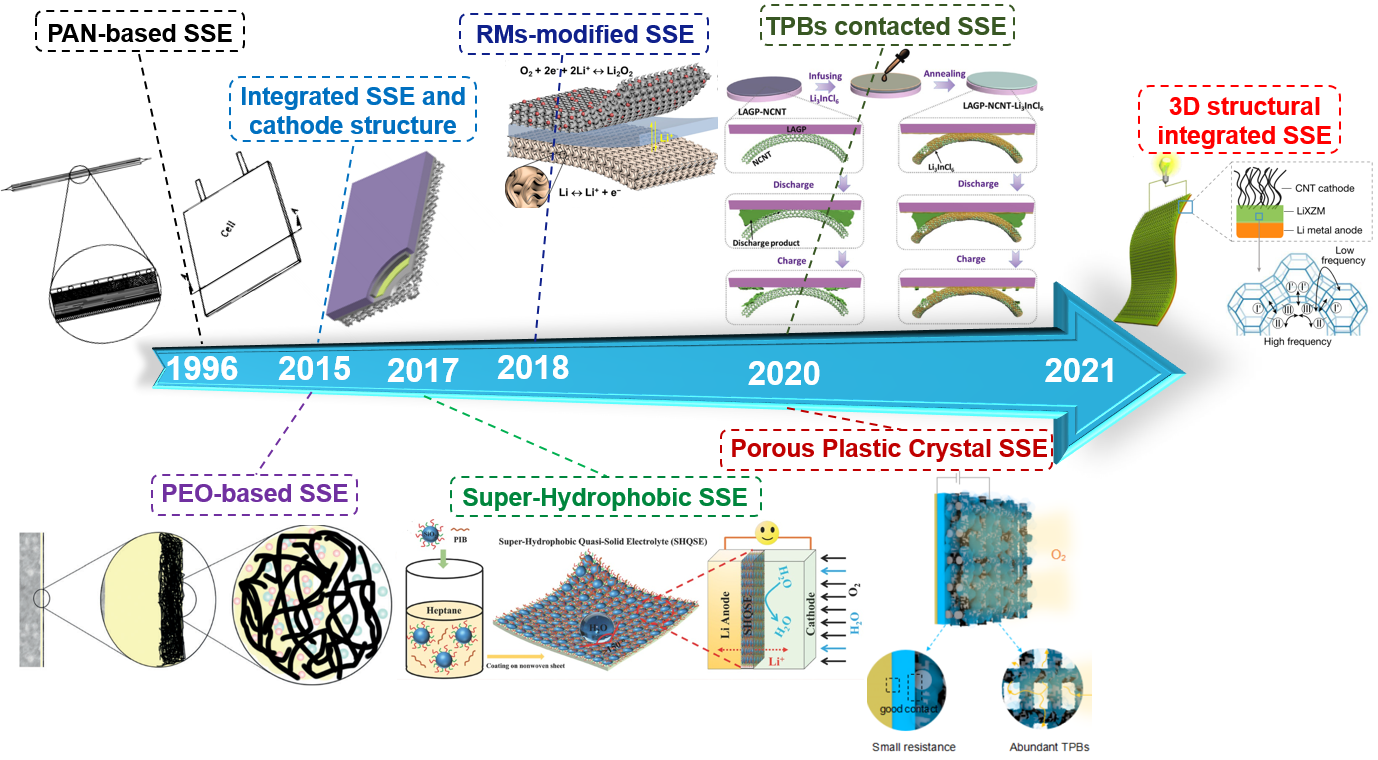Y.J. Ding, Y.J. Li, Z.-S. Wu*
Battery Energy, 2022, 20220014.
DOI: 10.1002/bte2.20220014 [PDF]

Solid-state Li-air batteries with ultrahigh energy density and safety are promising for long-range electric vehicles and special electronics. However, the challenging issues of developing Li-air batteries oriented solid state electrolytes (SSE) with high ionic conductivity, interfacial compatibility and stability to boost reversibility, increase stable triple-phase boundaries and protect Li anode in the open system substantially impede their applications. Herein, we systematically summarize the recent progress of SSE for Li-air batteries, and thoroughly highlight from the perspective of basic characteristic, SSE|air cathode interfaces, and SSE|Li anode interfaces. Firstly, the major characteristics of SSE in Li-air batteries in terms of ionic/electronic conductivity, chemical/electrochemical/thermal stability, mechanical strength and interfacial compatibility are briefly introduced according to three types of inorganic, organic and hybrid SSE. Secondly, key strategies of integrating catalytic sites, porous structure, electronic conductor with SSE to enhance triple-phase boundaries at SSE|air cathode for improving coulombic efficiency are emphatically discussed. Moreover, protecting Li metal from H2O, CO2, O2and redox mediators at SSE|Li anode for ensuring safety areelaborately overviewed. Finally, the future opportunities and perspectives on three important directions of three-dimensional structural integration, external field assistance and operando characterizations are proposed for advanced solid-state Li-air batteries.